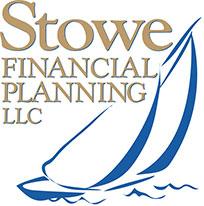Fundamentals Series: Volatility - “The Investment Roller Coaster”
Our last issue of the Fundamentals Series argued the use of a diversified portfolio to avoid the guesswork associated with predicting what the next winning asset class will be. Diversification is the sensible approach as you spread your bets across multiple asset classes and level out the “bumpiness” of returns. Another way to say the same thing: Diversification lowers a portfolio’s volatility.
Before I elaborate on volatility, take a look at the two scenarios below.
Notice how Option B’s annual returns go up and down drastically compared to Option A. A conservative investor would most likely choose Option A because it is the more stable investment. It is less volatile. Risk-seekers intrigued by high returns would choose Option B. They expect a higher investment return to compensate for the extra risk.
Investors who believe they can handle the highs and lows of the investment “roller coaster” would solely invest in the asset class that they expected to yield the highest return. Yet, few investors have the stomach or financial capability to be steadfast during the down years.
Stowe Financial Planning encourages volatility in client investment portfolios. Taking on additional risk, or volatility, will produce investors a higher long-term return on their investment. The higher the percentage of stock in your portfolio, the higher expected return.
Yet, there is no need to take extra unnecessary risk by buying excessive amounts of a highly volatile investment (emerging market for instance). Why put your financial plan at risk? You’re better off avoiding the erratic performance and sticking to a diversified mixture of asset classes. Examine the table below to see how volatility can negatively impact a portfolio in the short-term.
Portfolio #1 is more volatile and one can assume that the portfolio is largely (if not entirely) invested in highly volatile asset classes. Investing fully in one asset class, or even several risky asset classes, is a treacherous approach that offers little or no diversification.
Stowe Financial Planning’s investment strategy is to capture volatility by targeting certain risk factors in the market that have historically rewarded investors. In entirety, the portfolio structure includes asset classes with high volatility, the risk factors, as well as other sections of the market that are more stable. The portfolio needs to maintain a structure that is diversified among asset classes (stocks/bonds) and diversified within those asset classes (types of stocks/bonds).
Next time we will take this concept one step further and explain the use of the different risk factors we target in portfolio construction.
Written by Roddy Warren

